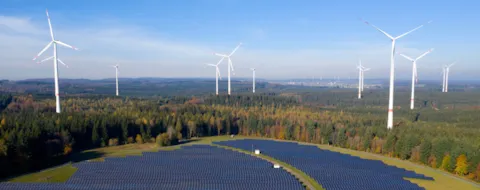Implementing a Corporate PPA in a climate of recession and high energy prices
Now that wholesale prices are high and the US and Europe are facing a recession, corporates are incentivized to sign PPAs of their economic value and sustainability.
Energy is a big part of meeting sustainability targets. It involves trying to optimize energy costs and keep them stable, use leadership as a competitive advantage to showcase actions to move the energy transition forward, and anticipate regulatory and carbon accounting policy changes. It is an opportunity for companies to show leadership within the energy transition and push for innovation.
Many industrial companies have had to change their business model due to the disruption Russia’s war in Ukraine has caused to their supply chain; it has also become more challenging to sign a PPA in a specific geographic area because of the growing uncertainty around the volumes of energy that will effectively be consumed.
Now that wholesale prices are high and the US and Europe are facing a recession, corporates are incentivized to sign PPAs of their economic value and sustainability.
With timing and efficiency now crucial for managing the corporate PPA transaction, success depends on identifying and considering the new challenges facing you when deciding on the right strategy for your needs. We have identified three common challenges and how to deal with them.
Defining your forecasted short-term and long-term energy consumption globally
With high prices and increased volatility, companies are encouraged to adopt energy-saving behaviour, focus on their energy efficiency and investigate the flexibility of demand solutions. In addition to these elements, the deglobalization trend, a movement towards a less connected world, has created uncertainties regarding the volume of annual electricity consumption for each jurisdiction.
For contracts such as a PPA with a lifetime of up to 10 years, it is key to consider this variable and consider the PPA structure which enables volume tolerance or resale to the exchange.
Measuring your creditworthiness and considering alternatives
Credit risk assessments are needed to enter into some specific green contracts such as CPPA; high market uncertainty impacts the credit of many players, and we’re seeing reinforced measures of due diligence when it comes to this assessment.
From a pricing perspective, counterparty risk is becoming a barrier, but the credit rate of a corporate can also limit access to specific structures. Considering alternatives to increase your creditworthiness, like collateral, a bank guarantee or a letter of credit, can positively influence your strategy in the long term.
Monitoring the regulatory changes and assessing the transactional risk
Some countries are quickly introducing new regulatory changes in an ever-changing energy landscape with wholesale market volatility. For example, the Polish prime minister Mateusz Morawiecki’s cabinet capped prices for renewable output for companies active in the PPA market in November 2022. This came as a surprise, and many developers had to put their pricing and offer on hold to figure out how to integrate this new parameter within their portfolio.
Closely monitor market conditions and maintain a close relationship of transparency with your PPA advisor so that you can make quick and efficient decisions at the most opportune moment.
12/21/2022 9:00:00 AM
